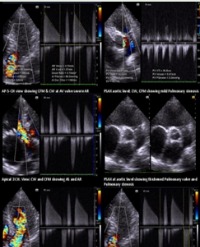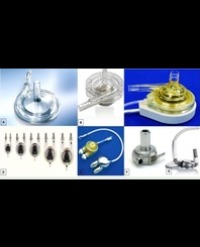
Echocardiography and Doppler Imaging In Cardiology: Multi-Valvular Involvement in Chronic Rheumatic Heart Disease
43 year female patient with multivalvular chronic rheumatic heart disease with Transthoracic 2- Dimensional Echo cardiographic (TTE) and Doppler evidence of 1. Severe Mitral valve stenosis MS with Mitral Valve Area (MVA) 1.01cm2 with mild to moderate mitral regurgitation, dilated Left Atrial Appendage (LAA). 2. Severe Aortic valvular stenosis with Aortic Valve Area (AVA) 0.74 cm2 calculated by continuity equation (CE) with moderate to severe Aortic Regurgitation (AR). 3. Severe Tricuspid Stenosis (TS) with TVA: 0.75 cm2 with moderate Tricuspid Regurgitation (TR). 4. Moderate Pulmonary Hypertension (PH) with PAP: 36.4 mmHg. 5. Mild pulmonary stenosis with thickened pulmonary valves [Figures 1-4].
Virendra C Patil1*



